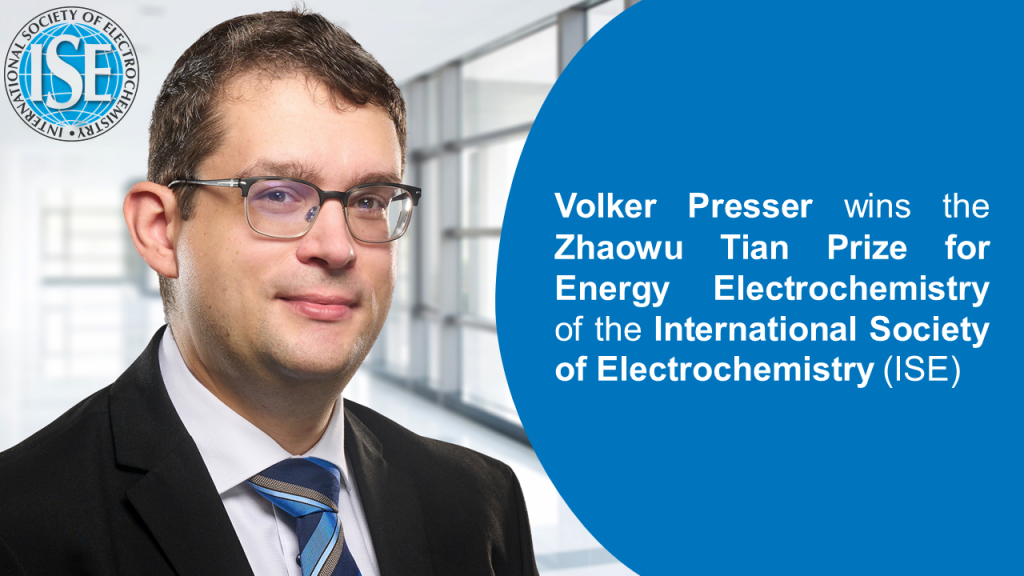After a lot of work by our Ph.D. students Stefanie Arnold and Lei Wang, our invited article in the Wiley journal SMALL on the dual-use of seawater batteries for energy storage and water desalination. Seawater batteries are a unique type of device that capitalizes, in the most common design, on a ceramic separator, an electrocatalytic reaction on one electrode side, and reversible sodium-ion electrochemistry on the other side. Since simple seawater can be used as the aqueous electrolyte in the system, the system has become known as seawater batteries. In our opinion, this technology can do more than contribute toward beyond-lithium energy storage by also being used for desalination.
New paper published in ACS Omega. Batteries employing transition-metal sulfides enable high-charge storage capacities, but polysulfide shuttling and volume expansion cause structural disintegration and early capacity fading. The design of heterostructures combining metal sulfides and carbon with an optimized morphology can effectively address these issues. Our work introduces dopamine-coated copper Prussian blue (CuPB) analogue as a template to prepare nanostructured mixed copper–iron sulfide electrodes. The material was prepared by coprecipitation of CuPB with in situ dopamine polymerization, followed by thermal sulfidation. Dopamine controls the particle size and favors K-rich CuPB due to its polymerization mechanism. While the presence of the coating prevents particle agglomeration during thermal sulfidation, its thickness demonstrates a key effect on the electrochemical performance of the derived sulfides. After a two-step activation process during cycling, the C-coated KCuFeS2 electrodes showed capacities up to 800 mAh/g at 10 mA/g with nearly 100% capacity recovery after rate handling and a capacity of 380 mAh/g at 250 mA/g after 500 cycles.
I am honored to receive the 2022 Zhaowu Tian Prize for Energy Electrochemistry. This award by the International Society of Electrochemistry recognizes the achievements in the field of electrochemistry for energy of my team and I. I am fortunate to join the list of awardees which includes from past years Xiangfeng Duan (2017), Fabio la Mantia (2018), Zhichuan (Jason) Xu (2019), and Joaquín Rodríguez-López (2021). Coming in the year of my 40th birthday and the 10-year-anniversary of being a PI at the INM – Leibniz Institute for New Materials, I am grateful to not just my team but also our esteemed collaborators, especially dear friends such as Michael Naguib, Guang Feng, Christian Prehal, Yury Gogotsi, Veronica Augustyn, and so many more!

New paper published in Electrochimica Acta on Ni-decorated AgAu alloy graphene/cobalt hydroxide electrodes for micro-supercapacitors to obtain high-performance micro-supercapacitors. A nanocomposite of graphene, cobalt hydroxide and nickel can was obtained from using gold-silver alloy lines. Using a two-step electrodeposition method, the scaly morphology is pre-deposited on a Ni film, followed by the interconnecting corrugated graphene/cobalt hydroxide composite nanomaterial. The resulting device, a graphene/cobalt hydroxide/Ni//activated carbon flexible micro-supercapacitor (MSC), was assembled by gel KOH-PVA electrolyte, graphene/cobalt hydroxide/Ni (positive electrode), and activated carbon (negative electrode). When testing, we obtained a volumetric energy of about 19 mWh/cm3 and the devices retained over 94% capacitance after 10,000 cycles. After 1,000 continuous bending/unbending cycles at a 180° bending angle with the frequency of 100 mHz, the capacitance retention of MSC is still maintained at 97% of the initial value.
Welcome to our new Postdoc Dr. Kaitlyn Prenger! Kaitlyn is a graduate of Tulane University from the esteemed team of Michael Naguib and will work on novel 2D (and other) materials for sustainable electrochemical applications.
